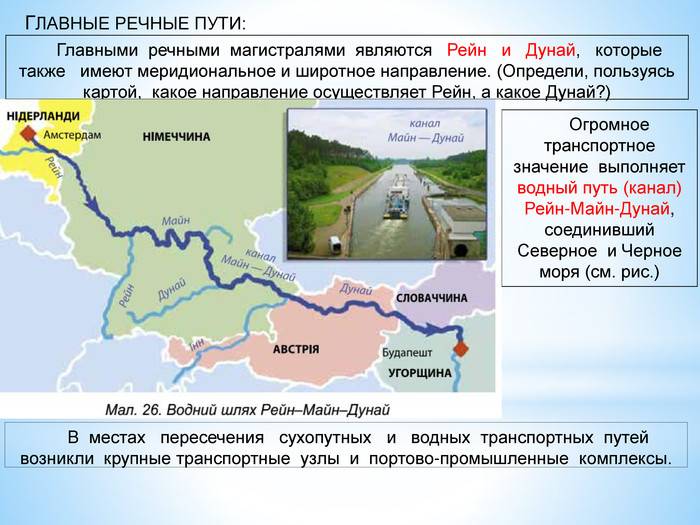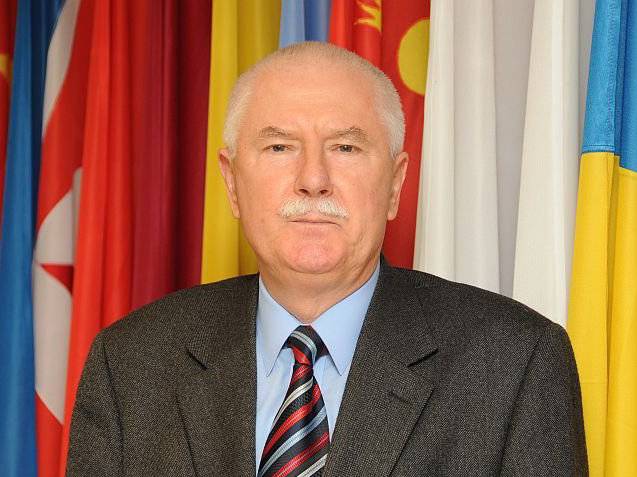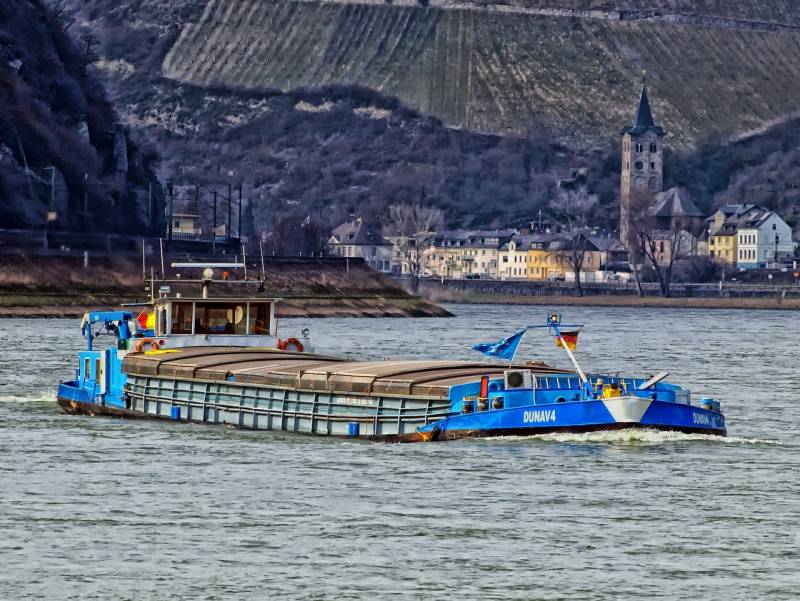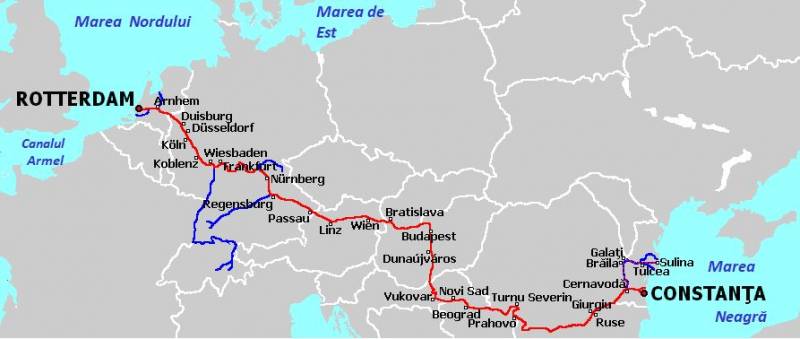How the Danube flows into the North Sea, and the Rhine into the Black
Leader of peoples and Eurasian transit
The division of Europe into military-political blocs at the end of the 1940's, especially in the context of the creation of NATO 4 on April 1949, excludes, as it seemed, active interaction between the countries of these blocks. But at the same time, in the leadership of the USSR, they found and implemented a comprehensive alternative to the division of Europe, and more precisely, all of Eurasia, into opposing blocs.

One example of this is the creation in the summer of the 1949-th interstate Danube Commission (still in force). The global "Stalinist alternative" was that cooperation between the countries of these blocs will inevitably continue in the field of transport - if only because international transport arteries have worked and will work in any geopolitical situations.
Cooperation is stimulated by the geography of such arteries, which cross countries and continents along numerous long routes, regardless of whether military-political blocs are created or dissolved there. This approach was successfully implemented by Moscow at the turn of the 1940-s and 1950-s, when the unions were created, existing today - these are unified multilateral agreements on international freight and passenger communications (1951) and the establishment of the international Danube Commission (1949)
The bottom line is that, as I.V. Stalin in November 1949 at the Moscow meeting of ministers of foreign trade and heads of transport departments of the USSR, China, Mongolia, DPRK and the socialist countries of Eastern Europe (except Yugoslavia), Iran and Finland,
In addition, all these factors, Stalin noted,
Out of politics
All countries mentioned agreed with such estimates. And the result of negotiations between them in 1949-1951. became agreements on international railway freight and passenger communications (SMGS, SMPS), signed in November 1951 in Prague between the USSR, China, DPRK, Mongolia and all Eastern European countries. And, on this basis, they predetermined the creation in June of the 1956-th Organization for Cooperation between Railways (OSJD) with the same participants, with the addition of 1956-m to this registry and the subsequent 5-anniversary of Finland, Iran and Vietnam (DRV, with 1976 g . - combined SRV). Now in this structure is Afghanistan and South Korea.
As the OSJD head Tadeusz Szozda (Poland) explained, "memorandums of interstate cooperation on all 13 international railway corridors have already been signed." In general, over the 60 years of the OSJD's existence, there has been a continuous strengthening of cooperation between transport departments and the railways of member countries themselves.

This became possible because the previously created system of cooperation, held together by the existing agreements of SMGS and SMPS, was viable in the vast Eurasian space. ”
In addition, the USSR in 1947 was the first to propose the creation of an international Danube Commission, which is also functioning today. The proposal was supported in the same year by the Danube socialist countries, in May of 1948, Austria. Currently, the Danube Commission is headed by Gordan Grlitz Radman, who recently headed the Croatian Foreign Ministry.

In August 1948 in Belgrade the Convention on the regime of navigation on the Danube was signed: on the basis of this document in May 1949 was established and from June 1949 the intergovernmental Danube Commission began to work as part of the USSR, Ukrainian SSR, Bulgaria, Hungary, Czechoslovakia , Romania and Yugoslavia. In March 1960, Austria joined the Commission; Germany - Associate Member of the Commission since 1957
Today, it includes all the Danube countries of Central and Eastern Europe, Russia, Ukraine, and Moldova; observer countries - Greece, Georgia, Macedonia, Slovenia, Croatia, Republic of Cyprus, Turkey. The very "geography" of the composition of the observer countries shows that the strategic role of the Danube basin is manifested throughout Southeastern Europe and the Eastern Mediterranean.
“Export and import do not stop”
Over the past 60 years of work of the Danube Commission, the total length of shipping routes along the Danube, its tributaries and adjacent channels has increased by more than a third; The main projects of the Commission at present are the shipping channels of the Danube-Sava-Adriatic (Croatia-Slovenia), the Danube-Vardar-Aegean Sea (Serbia-Macedonia-Greece), the Danube-Sofia (Bulgaria), the Danube-Odra-Elba (Austria- Slovakia-Czech Republic-Germany). By the beginning of the 90's, a project was implemented, with the participation of the DC, the trans-European Rhine-Main-Danube Canal.
These organizations remain the most representative international structures in the world, ensuring cooperation of the participating countries in the development of transport infrastructure and in the transportation process - its legal, technological and economic support. The main source of funding for these organizations and their events is the annual contributions of participating countries and associated countries / observer countries (for the latter, contributions are half lower).
The example of Yugoslavia during its conflict with the USSR (1948-1953 gg.) Is very indicative in this context. Moscow then perfectly understood the importance of arteries passing through Yugoslavia, including river arteries and seaports, for the development of trade relations between the USSR and Italy, Greece, Albania, Austria, Switzerland and many Middle Eastern countries. The Council of Ministers of the USSR in March 1949 in a closed decree "On measures to temporarily limit economic relations with Yugoslavia" noted: "The transit traffic of export and import goods of the USSR through the FNR Yugoslavia must be continued and not reduced."
It is characteristic that the same thing was recommended by the Soviet side to other countries of the Council for Mutual Economic Assistance (CMEA), which was established in January 1949 in Moscow. More precisely, in July 1949, the CMEA executive committee adopted the following decision: “It is considered expedient to consider the use by the countries participating in the Council of services regarding transit through Yugoslavia.” Moreover, Yugoslavia at that time did not reduce its foreign trade transit through the USSR and through Hungary controlled by Moscow, Romania, Bulgaria, Albania (the CMEA member countries). And, we repeat, at the same time joined the Danube Commission with the participation of the USSR and the "pro-Soviet" social countries.
The head of the Union Assembly of Yugoslavia (in 1971-74 gg.) Miyalko Todorovich in 1973-m described the role and functions of the Danube Commission:
Our people - get numbered
The new Commission, initiated primarily by Stalin, demilitarized this basin, politically and economically brought its countries together. What was strategically important for them: confirmation of this is the entry of Belgrade and Moscow into the Commission in defiance of the Soviet-Yugoslav confrontation of the 1948-54 years.
At the same time, Moscow did not at all object to the signing of the Danube Convention in Belgrade in August 1948 — it provided for the creation of the Danube Commission no later than 1949. Therefore, the Commission became a successful response to the US-British project 1946-47. - Creation of the Danube-Black Sea Confederation. The principle of participation in the Commission only of the Danube countries, put forward by Moscow in 1947, could not be broken in the West. But this principle was supported by all the countries of the basin. "Therefore, this structure was" perhaps the first step in the process of easing political tension in Europe. "

The dynamics of traffic and the country structure are very interesting. fleet on the Danube. According to the Danube Commission for 2018, of the total number of cargo ships - river and river-sea class, by DC member countries, Romania has a maximum share of 300 ships out of about 670 (in 2016 it was 657). This is followed by Serbia (86), Ukraine (58), Hungary (56), Bulgaria (51).
The total freight traffic in the DK-basin exceeded 2018 million tons in 52 (2016 - 49,6 million tons), of which 25% of bilateral and transit traffic fell to Romania, 15% to Ukraine, and 12-13% - Hungary and Serbia. In the total cargo turnover of the Danube and Danube ports of the DC member countries, the share of the ports of Romania is almost 25%, Ukraine - about 20%, Hungary -14%, Bulgaria - 12%.
According to the VipPerson information and analytical agency, representatives of all the member countries of the Danube Commission still recognize that the 70 years ago signed the multilateral treaty (Belgrade Convention) on the Danube is the first and only international legal instrument that protects the sovereign rights and interests of the Danube states based on international law.
The fact is that shipping on the Danube is regulated by agreement only between the Danube countries. And it is characteristic that, although Ukraine in 1991 did not ascribe to itself the entire fleet of the Danube shipping company of the USSR, there were no objections, including among the newly formed member countries, regarding the participation of the Russian Federation in the commission. At least for now. But Russia lost the Danube ports, which remained in Ukraine and Moldova.
This is not least because the Danube Commission, which upholds the rights and interests of the new member states of the Danube and adjacent to the basin, was created at the time on the initiative of Moscow.


Information